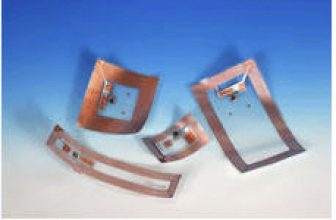
The use of RFID in the Olympics: ticket anti-counterfeiting and food safety tracking
[ad_1]
Looking back on 2008, China’s RFID industry seems to have shown a trend of accelerated development. Taking the Olympic Games as an opportunity, Chinese RFID companies have made considerable progress in technology and application. The growth of China’s RFID market has also received global attention, and international manufacturers are generally optimistic about the Chinese market. On the whole, the development of RFID in China is showing a good momentum.
The Beijing Olympics brings new impetus
All previous Olympics have been the engine for the development of new technologies, and the Beijing Olympics is no exception. In order to serve the Olympic Games, the RFID industry has launched two magic weapon-level applications-ticket anti-counterfeiting and food safety tracking. After more than ten days of testing, these two applications have been praised all over the world, which not only guarantees the safe conduct of the Olympic Games, but also enables China to accumulate a lot of valuable practical experience in the field of RFID.
The Beijing Olympics is the first Olympic Games to fully use RFID technology for ticket anti-counterfeiting. Tickets for this Olympic Games are loaded with the smallest domestic RFID chip developed by China. The chip contains the relevant information of the ticket purchaser. As long as it is swiped on the ticket inspection machine, the background database can be activated to retrieve the audience’s personal information, which not only facilitates the audience ticket inspection, but also effectively prevents ticket forgery.
Food safety tracking is another major application of RFID in this Olympic Games. This technology focuses on preventing four types of food emergencies: food-borne diseases, the abuse of prohibited substances in animal-derived foods, the illegal use of highly toxic and high-residue pesticides and food additives, and malicious contamination of biological, chemical, and radiological properties. Food incident. In this Olympic Games, all foods were equipped with RFID electronic tags, and the entire process of planting, transportation, classification, acceptance and storage was monitored, and the aforementioned four types of food emergencies were prevented. For more than ten days, athletes and staff from all over the world have been admiring China’s food, fully affirming the success of my country’s RFID food tracking application.
Industry sector expands steadily
In the application industry, RFID has not only flourished in the traditional transportation and logistics industry, but has also achieved application expansion in areas such as medical equipment tracking, food safety traceability, and asset management. China’s applications still retain their own characteristics. In 2008, government-led projects were a popular sector. According to statistics, the most important applications at present are: warehouse/transportation/logistics industry, access control/attendance, and asset management.
It is worth noting that RFID will further expand in the field of logistics and transportation. Due to the vigorous development of China’s manufacturing industry, third-party logistics and transportation have also emerged as supporting industries. According to informal statistics, there are over 10,000 logistics and transportation companies in China. M&A activities are happening in this field from time to time, and some large third-party logistics companies will appear one after another. In order to achieve higher operational efficiency, they will cooperate with transportation partners all over the country. To make their partner networks achieve seamless cooperation effects, the use of RFID systems will be a feasible way. IDC related data show that the application scale of RFID by third-party logistics companies reached 55.34 million yuan in 2008, and by 2009 this application scale will exceed 100 million yuan.
Convergence applications go in depth
For the development of the RFID industry, it is still in the stage of typical demand-driven technology, so the industry is looking for new applications. In the past, the industry’s discussions on the application of RFID have mostly focused on logistics, medicine and food safety, item tracking, and ticket-related identification. Although in some developed countries, based on human rights considerations, obstacles have been set up in the identification of relevant persons. For example, California has passed laws restricting the use of RFID biochips and tracking of persons, including prisoners in prisons. Understand that there are still some states that are studying the follow-up. But this also seems to help inspire the RFID industry to develop new identification methods and new applications. Recently, Samsung Electronics has implanted a single RFID reading chip into a mobile phone. The reader is actually a reading card with a size of 6.5×6.5mm. The chip card’s working frequency is 900MHz, and it integrates a radio frequency front end, a baseband modem with a microprocessor, and a memory chip. In this way, the “ubiquitous” application mode is truly realized. “Our goal is to be able to access identification information by mobile at any time and anywhere,” said Chihee Chung, LSI department manager of Samsung Electronics. “Undoubtedly, our mobile single-chip RFID identification technology has become a ubiquitous computing technology. The most important step on the path of evolution.” If you look at it simply, people might think that this only brings a lot of convenience to the RFID application industry, but in fact they ignore the deeper application meaning, that is, it can make any consumer in Before buying an item, read and identify the information through your mobile phone to determine the authenticity of the item, so as to give consumers a pair of “eye-catching”. This will also drive the extension of mobile phone functions. A Canadian company recently launched the world’s first mobile RFID reader using Bluetooth technology. The implementation scheme uses a dedicated Bluetooth reading pen like a ballpoint pen, as well as a variety of handheld devices. But the essence is to use the built-in Bluetooth technology to complete the automatic identification of various tags, so that there is no need to connect the data to the server, and it saves a lot of bulky equipment and reduces the cost.
Along with the in-depth integration of applications, the application field and application depth of RFID are constantly making new progress. The initial target application of RFID is only item identification and tracking. However, with the development of the Internet and personal area networks, RFID has shown a trend of continuously enriching functions. For example, remote control of refrigerators for industrial applications and medical applications via the Internet has emerged, and precision management of temperature, the number of items in the refrigerator, and changes through RFID has been implemented; in addition, patient information has been implanted into RFID chips to achieve low The cost of telemedicine has also begun to appear.
[ad_2]




